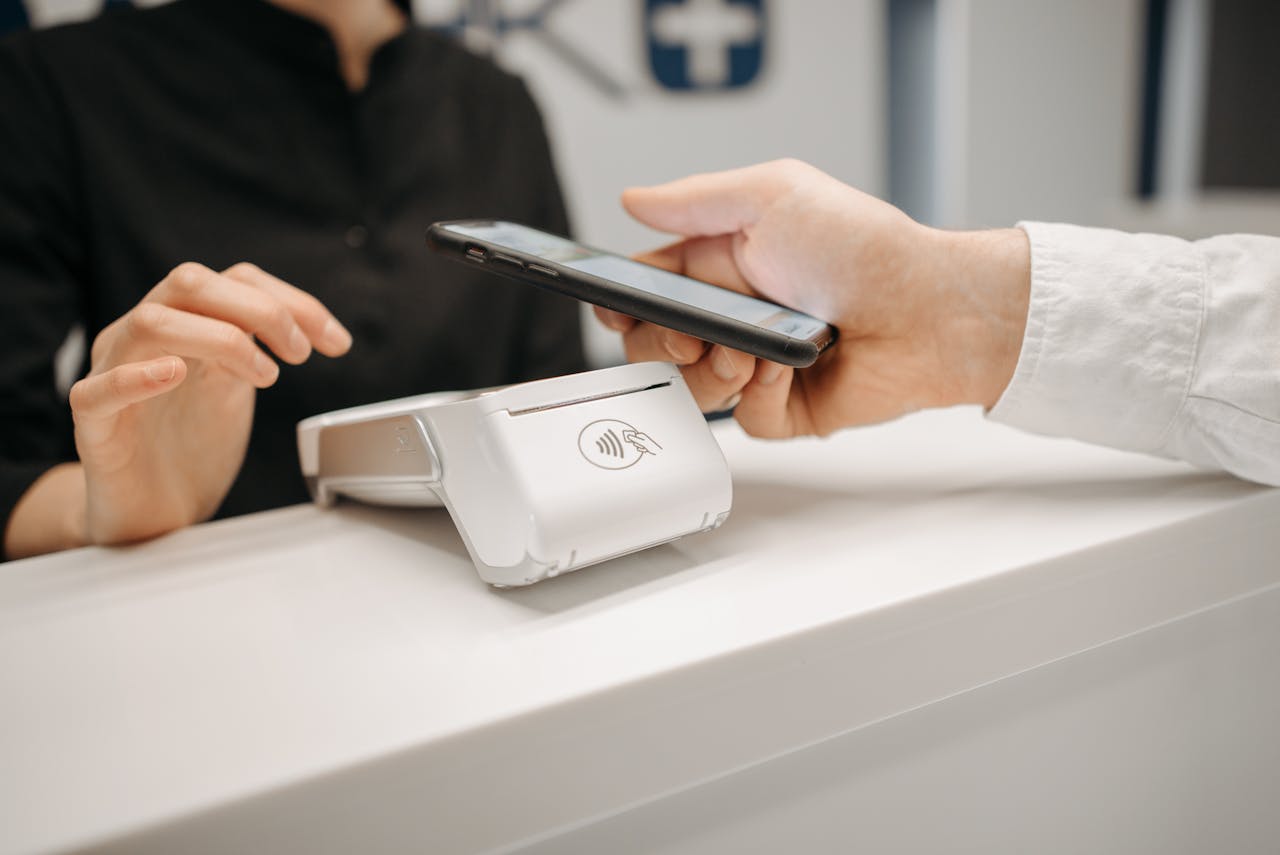1. The Current State and Trends of Digital Payment Security in 2025
1.1 The Rising Adoption of Digital Payments
The safest digital payment methods in 2025 are more important than ever as the global digital payment market continues its rapid expansion. According to Statista, the total transaction volume of digital payments worldwide is expected to reach $9.46 trillion in 2024 and exceed $10 trillion in 2025. In developed markets such as the US and Europe, mobile payments (Apple Pay, Google Pay), credit card payments, cryptocurrency payments, and hardware wallets are gradually replacing traditional cash transactions.
1.2 Increasing Cyber Fraud and Security Threats
While digital payments have become more convenient, security risks have also surged. According to the Federal Trade Commission (FTC), financial fraud in 2024 resulted in $1.02 billion in losses, with over 30% of cases related to digital payment tools. Threats such as hacking, identity theft, deepfake scams, and SIM card hijacking are becoming more prevalent, increasing the demand for payment security.
1.3 Stricter Regulatory Policies
Governments worldwide are implementing stricter regulations on digital payment security, including:
- European Union: Introduced PSD2 (Revised Payment Services Directive), mandating two-factor authentication (2FA) for payment platforms.
- United States: Passed the Digital Identity Act, requiring all online payment systems to enhance KYC (Know Your Customer) verification.
- United Kingdom: Plans to launch Financial Security Regulations (FSR 2.0) in 2025, strengthening payment data protection.
1.4 Security Technology Upgrades in Payment Tools
- AI-driven fraud detection (e.g., Apple Pay and Google Pay use AI risk assessment systems).
- Biometric authentication (e.g., fingerprint and facial recognition for secure transactions).
- Multi-layer encryption (e.g., cold storage solutions for cryptocurrency wallets).
2. The Safest Digital Payment Tools in 2025
2.1 Apple Pay – The Most Secure Mobile Payment for iOS Users
✅ Pros:
- Uses Face ID/Touch ID biometric authentication, making fraud extremely difficult.
- Dynamic security codes generate a unique code for each transaction, preventing data theft.
- Closed Apple ecosystem enhances overall security.
❌ Cons:
- Works only on Apple devices (iPhone, iPad, Apple Watch).
- Not universally accepted (some small businesses in Europe do not support it).
2.2 Google Pay – AI-Powered Security for Android Payments
✅ Pros:
- AI-driven risk detection can block suspicious transactions in real time.
- Supports 200+ countries, offering greater compatibility.
- Works with NFC, QR codes, and online payments, making it highly versatile.
❌ Cons:
- Relies on a Google account, which could expose payment information if hacked.
- Limited compatibility on certain older Android devices.
2.3 Credit Cards – The Most Secure Traditional Payment Option
✅ Pros:
- Banks provide fraud protection, with Zero Liability Protection from Visa and Mastercard.
- Offers cashback, points, and travel insurance benefits.
- Accepted globally, with broader acceptance than mobile payments.
❌ Cons:
- Prone to credit card fraud, including data breaches and phishing scams.
- Chargeback processes can be complex and take weeks.
- Some merchants charge extra fees for credit card payments.
2.4 PayPal – A Secure Online Payment Veteran
✅ Pros:
- Buyer protection policy allows refunds for fraudulent transactions.
- Supports two-factor authentication (2FA) to prevent hacking.
- Operates in 200+ countries, making it a top choice for international transactions.
❌ Cons:
- High transaction fees, with cross-border charges up to 4.4%.
- Account freezes due to fraud prevention measures.
2.5 Hardware Wallets (Ledger, Trezor) – The Ultimate Security for Crypto Payments
✅ Pros:
- Cold storage mode keeps funds offline, making hacking nearly impossible.
- Private keys stored locally, providing superior security over online wallets.
- Supports multiple cryptocurrencies (BTC, ETH, USDT, etc.).
❌ Cons:
- Expensive (e.g., Ledger Nano X costs ~$149).
- Physical loss risk (if lost, funds may be irrecoverable).
3. Digital Payment Security Comparison
To help you understand the security levels of different payment methods, we compared them based on four key factors: fraud protection, dispute resolution, password leak risk, and overall security.
| Payment Method | Fraud Protection | Dispute Resolution | Password Leak Risk | Overall Security |
|---|---|---|---|---|
| Apple Pay | ✅ Face ID/Touch ID, dynamic security codes | ✅ Bank supports chargebacks | ✅ Device-level encryption, very low risk | ⭐⭐⭐⭐⭐ |
| Google Pay | ✅ AI fraud detection, tokenized transactions | ✅ Bank supports chargebacks | ✅ Device-level encryption, low risk | ⭐⭐⭐⭐ |
| Credit Card | ✅ Bank-grade fraud detection, CVV protection | ✅ Chargebacks available | ❌ Prone to card fraud | ⭐⭐⭐⭐ |
| PayPal | ✅ Buyer protection, extra authentication | ✅ Dispute resolution, refunds supported | ❌ Vulnerable to phishing attacks | ⭐⭐⭐ |
| Ledger/Trezor (Hardware Wallets) | ✅ Offline storage, local private keys | ❌ No chargebacks | ❌ Irrecoverable if private key is lost | ⭐⭐⭐⭐⭐ |
Key Takeaways:
- For iPhone users, Apple Pay is the safest option due to biometric authentication and dynamic security codes.
- For Android users, Google Pay offers high security with AI-based fraud detection.
- Credit cards are best for large transactions, but users must be cautious of phishing scams.
- PayPal is ideal for cross-border payments, but users should enable 2FA to prevent fraud.
- Hardware wallets are the most secure for storing crypto, but losing your private key means losing your funds forever.
4. How to Improve Your Payment Security?
- Enable two-factor authentication (2FA) to prevent account hijacking.
- Update payment passwords regularly and avoid using the same password across multiple sites.
- Avoid using public Wi-Fi for payments to prevent data theft.
5. Which Payment Method Should You Choose?
Different payment tools have their pros and cons. Choose the one that best suits your needs:
- For daily transactions: Apple Pay (for iOS users) / Google Pay (for Android users).
- For cross-border payments and online shopping: PayPal.
- For credit building and financial flexibility: Credit cards.
- For long-term cryptocurrency storage: Hardware wallets.
💬 Which payment method do you prefer? Share your thoughts in the comments and forward this article to help others enhance their payment security!







